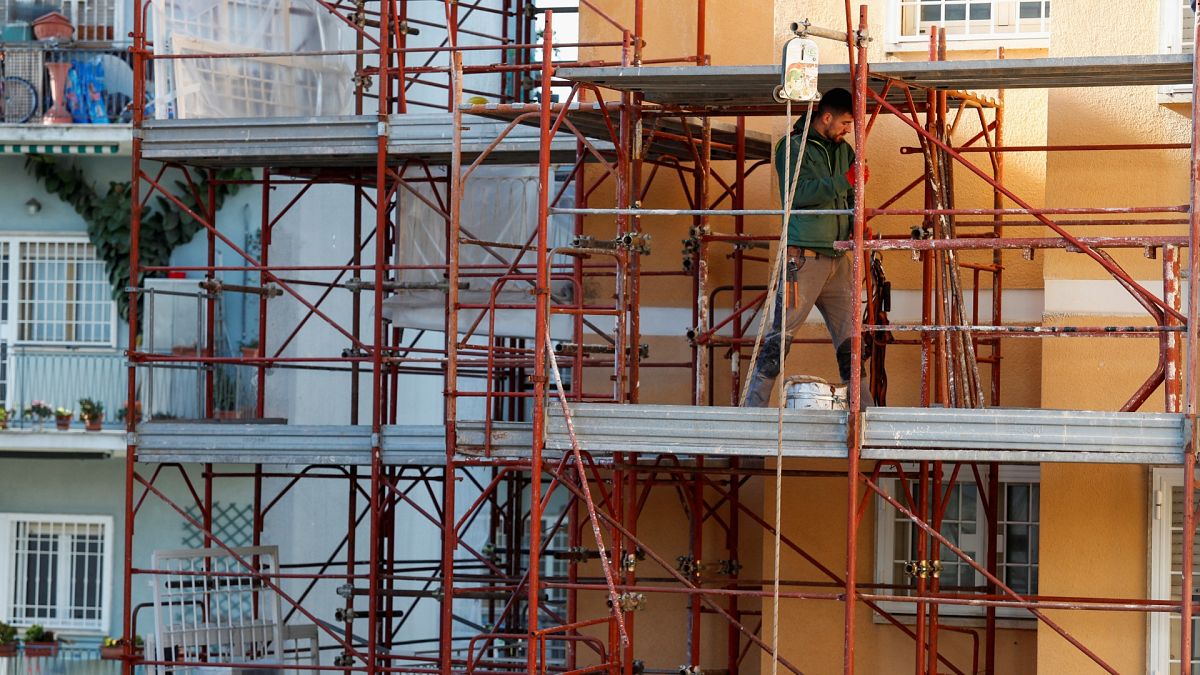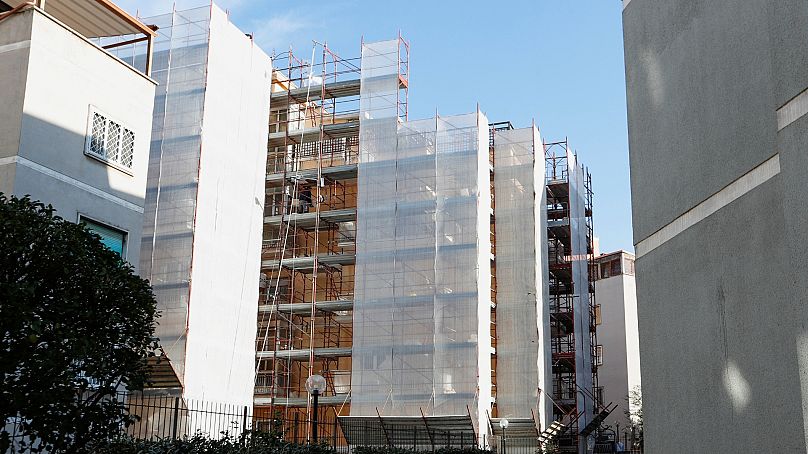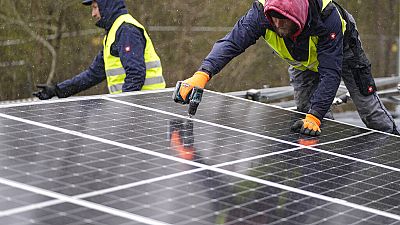Countries will older houses could bear the brunt of EU-mandated green building renovations.
Italy is pushing back against EU plans to improve the energy efficiency of buildings.
The ‘green buildings’ pact aims to slash greenhouse gas emissions in the building sector - the single largest energy consumer in the EU.
But Italy says neither its government nor homeowners can afford to complete the required renovations.
EU countries are set to negotiate binding legislation this year.
What is the EU green buildings pact?
The EU green buildings pact aims to make public and residential buildings more climate friendly by improving insulation and energy efficiency. The goal is to double renovation rates by 2030.
The European Commission has proposed that the worst 15 per cent of residential buildings in each country be improved by 2030 and again by 2033. Non-residential buildings face a similar timetable.
Environmental activists say Italy’s sudden opposition to the long-standing project risks undermining the EU’s goal of becoming the first climate-neutral continent by 2050.
The European Commission estimates that the bloc's buildings account for 40 per cent of the EU's energy consumption and 36 per cent of its CO2 emissions. The sector is therefore crucial in the fight against climate change.
Why is Italy opposed to the EU’s green buildings plan?
In one of its first acts after taking power last October, Italy's right-wing government gave its blessing to the green buildings plan.
It has since raised concerns over the cost of compliance, as the country has older and less energy-inefficient housing than many of its neighbours.
"Europe would like to impose on us a directive on energy efficiency that would be a disaster for our housing stock," former Prime Minister Silvio Berlusconi, head of the co-ruling Forza Italia party, said on Monday.
74 per cent of Italians own the house or flat they live in, compared to 65 per cent in France and 50 per cent in Germany. This leaves Italians particularly exposed and its ageing housing adds to the problem, experts say.
"Italy's building stock is more obsolete. In fact, 60 per cent of buildings here are in the two worst energy classes, against, for example, 17 per cent in France and 6 per cent in Germany," says Federica Brancaccio, head of ANCE, referring to Energy Performance Certificate (EPC) gradings.
Which other countries could bear the brunt of renovation costs?
In the EU, 23 per cent of homes were constructed before 1945, and 26 per cent were constructed between 1945 and 1969, according to 2014 figures.
That means 49 per cent of homes were built before the first thermal standards were introduced in the 1970s. Only 23 per cent were built after 1990.
Belgium and Denmark have the highest share of homes built before 1945.
Recent research analysed which countries have the worst insulation in Europe. Belgium, France, the Netherlands and Spain were revealed to have worse home insulation than Italy, meaning they could also face high renovation costs.
How much could green building renovations cost in Italy?
Italy's national building association ANCE estimates that to meet the green building pact’s goals, 1.8 million residential buildings will have to be upgraded over the next 10 years at a cost of €400 billion. A further €190 billion will be needed to bring business properties to the required standards, it has forecast.
Italian government officials want deadlines pushed back and have indicated Italy will offer exemptions to a broad swathe of its older homes.
"We will take the necessary steps to ensure that the final text of the directive contains provisions that are compatible with the peculiarities of the Italian building heritage and that allow for gradual redevelopment," European Affairs Minister Raffaele Fitto told parliament last month.
Prime Minister Giorgia Meloni has promised that Italy will play its part in fighting global warming, but has said that this effort should not harm the economy or be done by the state alone.
Will Italian homeowners receive financial aid for completing renovations?
Under a deal struck with the European Union by the previous government, Italy will use €15.3 billion from a post-COVID EU recovery fund to improve the energy efficiency of buildings.
This is just a fraction of what is needed.
Previously, Italy had been leading efforts to green its buildings. In 2020, a tax rebate worth 110 per cent of the cost of the building work was offered to homeowners completing renovations. This pushed the number of renovations up to around 360,000 in 2021-2022 from just 2,900 a year between 2018 and 2020.
But the so-called 'superbonus' cost the Treasury more than €60 billion.
The new government, anxious to focus on other measures such as tax cuts, has reduced the rebate to 90 per cent and has drastically restricted the number of people who can apply.
Ministers say that in future the European Union will have to help pay for subsidies.
The Buildings Performance Institute Europe (BPIE), an independent think-tank based in Brussels, says eventually a broad mix of financing will have to be tapped if the European Union wants to achieve its ambitious targets in Italy and beyond.
"I could not imagine a situation where private owners have to pay for all the renovations out of their own pockets. That would represent a failure of the project," says Mariangiola Fabbri, BPIE’s head of research.
Could building renovations save money in the long term?
Despite the high costs of renovations, the BPIE think-tank says Italy has much to gain from the EU plan given the surge in energy prices following Russia's invasion of Ukraine.
"If Italy just insulated the roofs and walls in its least efficient buildings, it would save 49 per cent of its gas consumption," says Fabbri. "I can only see good reasons to embrace this vision."
Research by the UK’s Office of National Statistics - based on Energy Performance Certificates - corroborates this figure, showing that energy costs for older homes are more than double those of newer ones.




